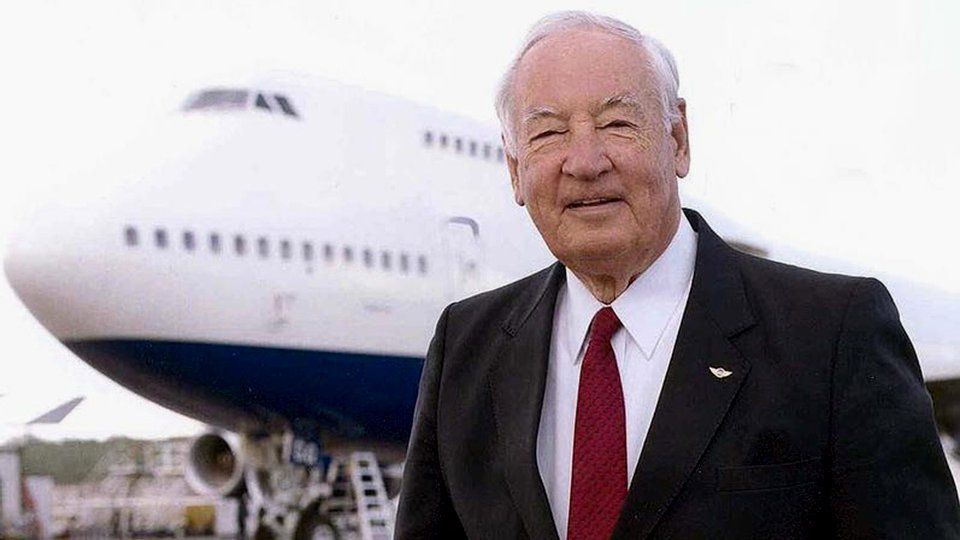Joe Sutter, 'Father of the Boeing 747', dies
- Published

Joe Sutter, the man who led development of Boeing's 747 jumbo jet, has died aged 95.
Boeing's commercial aircraft boss Ray Conner said Sutter was "an inspiration" not just to Boeing but "to the entire aerospace industry".
The 747, which ushered in the long-haul travel era, first flew in 1969 before making its commercial debut in 1970.
It only lost its status as the biggest passenger aircraft in 2007 with the launch of the Airbus A380.
Sutter was in charge of the engineering team that developed the 747 in the mid-1960s.
He and his team became known as "the Incredibles" for producing the world's largest aeroplane in just 29 months.
Cautious beginnings
Ironically, Boeing did not initially expect to produce many passenger-carrying 747s.
In the 1960s, the future of commercial aviation was widely expected to be with supersonic airliners. The subsonic 747 was expected to become obsolete after a production run of about 400 craft.
Boeing thought it would largely be used as a freighter - which was why the pilots' cabin was placed on an upper deck - giving the aircraft its distinctive humped silhouette.
However, with the oil price rises of the 1970s, noisy and expensive supersonic flight was limited to just one commercial aircraft - Concorde.
The 747, on the other hand, has been continuously updated and improved throughout its life.
Production is likely to last until at least 2019, and so far the company has delivered more than 1,500 of the planes.
Engineering career
Joe Sutter was born in Seattle in March 1921, and took a summer job at Boeing in 1940 while studying for an aeronautical engineering degree.
His first job was working on Boeing's 1940s propeller-driven airliner, the Stratocruiser, and was then involved in most of the company's subsequent commercial aircraft.
After his retirement from Boeing after four decades in 1986, he continued working for the company as a consultant.
He also served on the Rogers Commission that investigated the 1986 Space Shuttle Challenger disaster.
Follow Tim Bowler on Twitter@timbowlerbbc
- Published13 July 2016